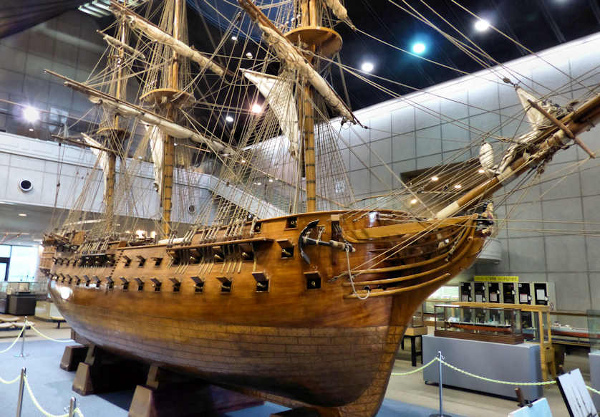New Delhi: Maritime activity in ancient India, seafaring under prominent Hindu dynasties such as the Nandas, Mauryas and Guptas, and the influence of Muslim and British rule on India’s maritime heritage — these are some of the themes that the country’s first maritime museum in Gujarat’s Lothal will exhibit.
The museum, whose design is being finalised by a consortium of private companies, is part of the Narendra Modi government’s attempt to reclaim and exhibit ancient Indian history from the Indus Valley civilisation.
The National Maritime Museum will have 1,20,000 square feet displayable space, and consist of up to 14 sections. In addition to the museum, there will be a maritime theme park, intended to give visitors an immersive experience of India’s maritime heritage through the ancient, medieval, colonial and modern ages.
The government might subsequently set up a training and development facility on maritime archaeology, tourist accommodation centres and a nature conservation park within the museum compound.
Why Lothal
Archaeological excavations discovered the oldest man-made dockyard — over 5,000 years old — in Lothal, located near the village of Saragwala in the Dholka Taluka of Ahmedabad district.
It was one of the southernmost cities, and the only port town, in the Indus Valley civilisation.
While the city has been nominated as a UNESCO World Heritage Site by the Indian government, its application is pending on the United Nation’s tentative list.
According to UNESCO, stone anchors, marine shells and seals possibly belonging to the Persian Gulf corroborate the use of the basin as a dockyard where boats would have sailed upstream from the Gulf of Cambay during high tide.
“The availability of antiquities whose origin is traceable to the Persian Gulf and Mesopotamia and the presence of what is identified as a bead making industry further attributes Lothal as an industrial port town of the Harappan culture,” it adds.
While the fact that Lothal was a port town of significant importance has been well-known for some time, the Modi government’s “ideological push” to exhibit Indian maritime culture led to the idea of building a museum, an official at the culture ministry said.
The museum, aimed at developing Lothal into a place of unparalleled maritime heritage, will stretch across a part of the archaeological site.
What to expect
The proposed project, which has been in the pipeline for over a year now, will exhibit objects related to ships, ancient shipbuilding and navigational technologies, and social and cultural links established through maritime routes, among other things.
“Artefacts, literature, scholarship — recovered by underwater excavation using the ASI (Archaeological Survey of India) and also private companies — will be used for this project… But it is the dockyard that will be the big USP of this museum,” the official said.
The maritime trade between the Indus Valley and Mesopotamia civilisations is another area of focus, the official said.
“Of course, the museum will not just show the maritime trade … The focus will also be on showcasing the urbanisation, town-planning and magnificent technology of the Indus civilisation,” the official added.
Sources said that at a later stage, possible linkages between the Indus and Vedic cultures may be explored.
Source: The Print
Image Courtesy: Tourism Portrait
You may also like
-
India Can’t Afford to Remain Stagnant at this Juncture, Says PM Modi; Asks People to Buy Locally-Made Goods
-
Stolen Artefacts to be Returned to India from Scotland Museums
-
Netaji’s Hologram Statue at India Gate
-
10th Century Stone Idol of Goat Head Yogini IllegallyRemoved from A Temple in Lokhari, Banda, UP Being Returned to India
-
UNESCO Inscribes ‘Durga Puja in Kolkata’ on the Representative List of Intangible Cultural Heritage of Humanity
